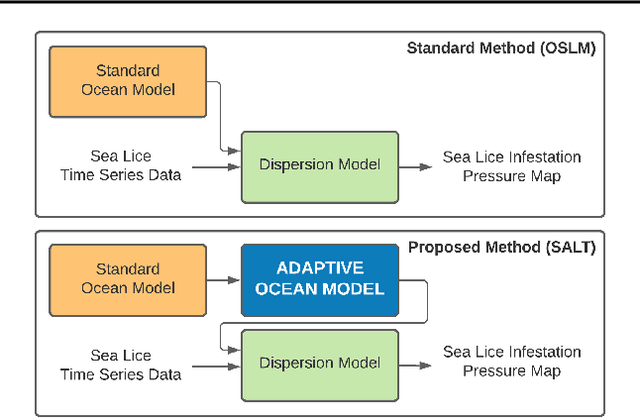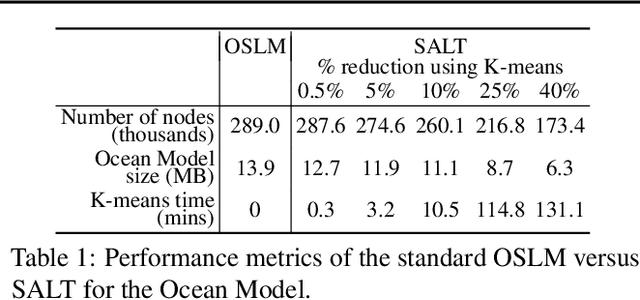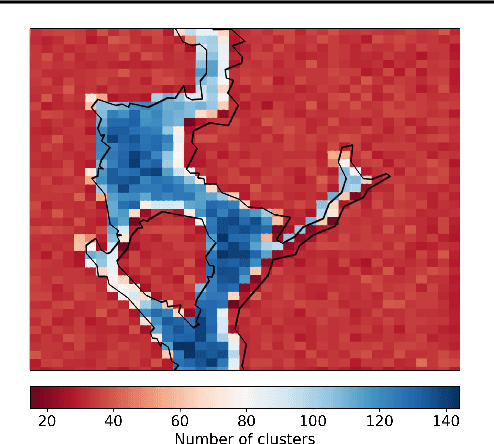SALT: Sea lice Adaptive Lattice Tracking -- An Unsupervised Approach to Generate an Improved Ocean Model
Paper and Code
Jun 24, 2021



Warming oceans due to climate change are leading to increased numbers of ectoparasitic copepods, also known as sea lice, which can cause significant ecological loss to wild salmon populations and major economic loss to aquaculture sites. The main transport mechanism driving the spread of sea lice populations are near-surface ocean currents. Present strategies to estimate the distribution of sea lice larvae are computationally complex and limit full-scale analysis. Motivated to address this challenge, we propose SALT: Sea lice Adaptive Lattice Tracking approach for efficient estimation of sea lice dispersion and distribution in space and time. Specifically, an adaptive spatial mesh is generated by merging nodes in the lattice graph of the Ocean Model based on local ocean properties, thus enabling highly efficient graph representation. SALT demonstrates improved efficiency while maintaining consistent results with the standard method, using near-surface current data for Hardangerfjord, Norway. The proposed SALT technique shows promise for enhancing proactive aquaculture management through predictive modelling of sea lice infestation pressure maps in a changing climate.
 Add to Chrome
Add to Chrome Add to Firefox
Add to Firefox Add to Edge
Add to Edge